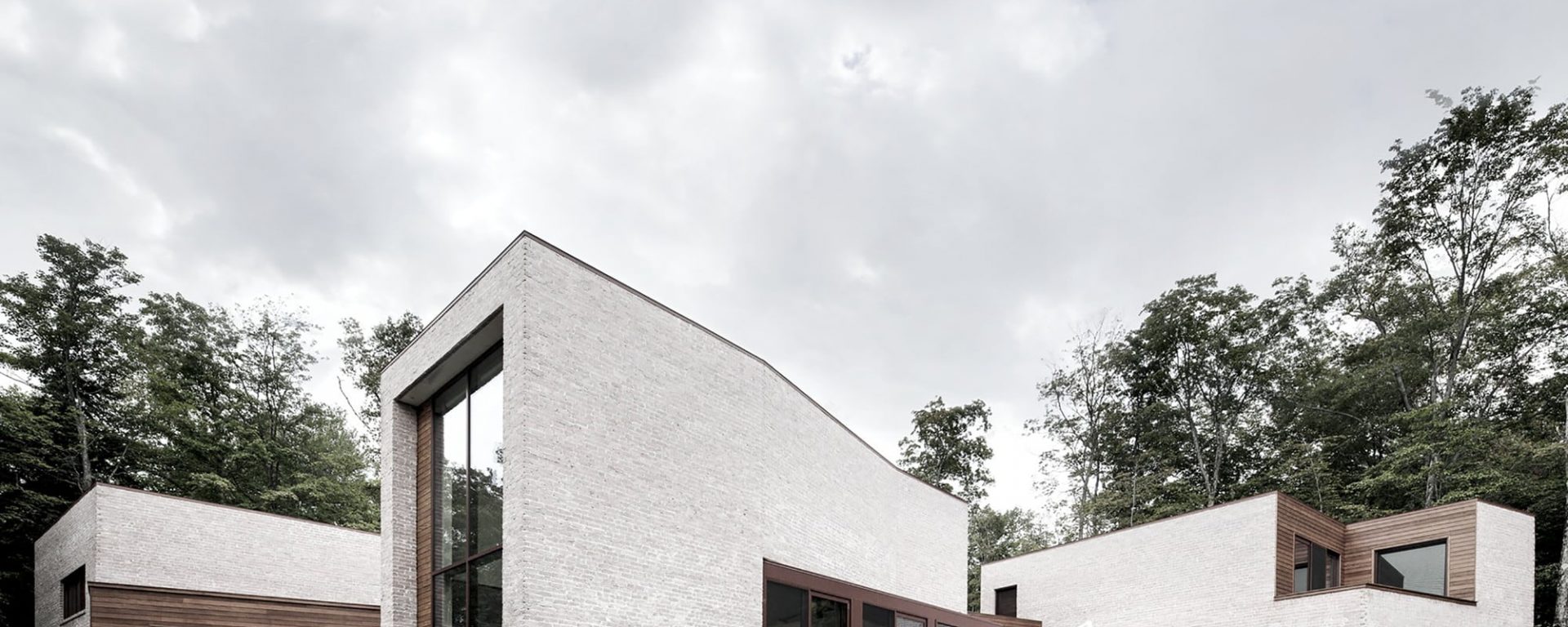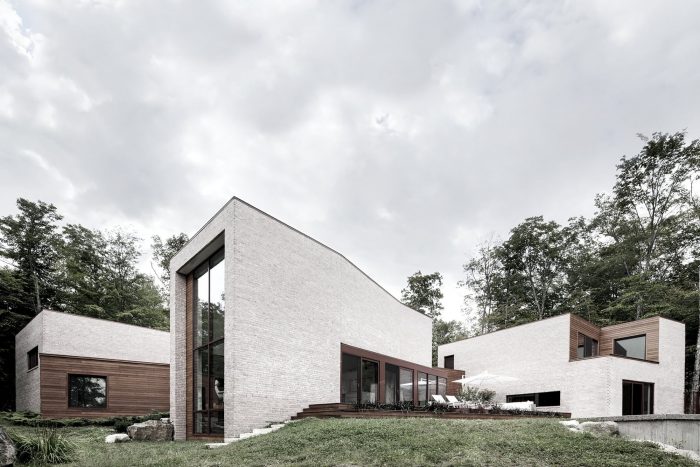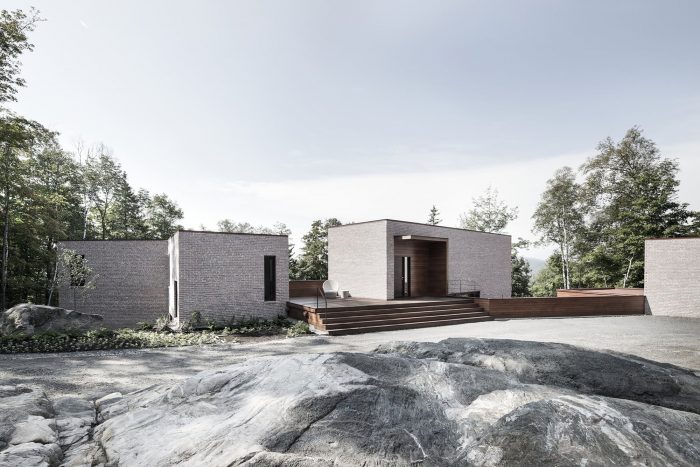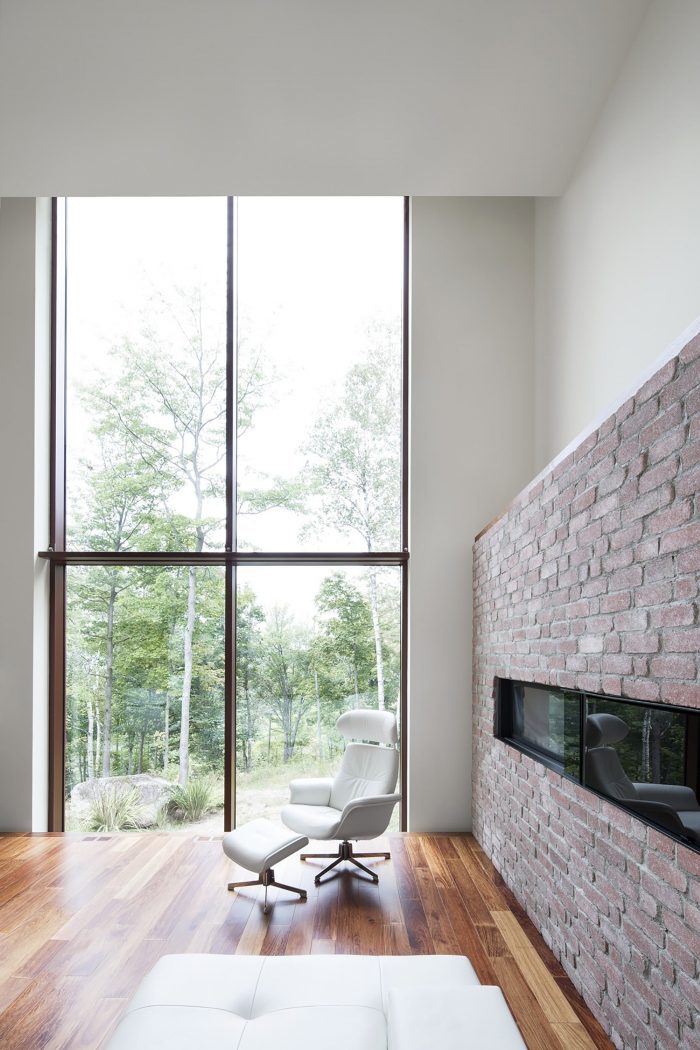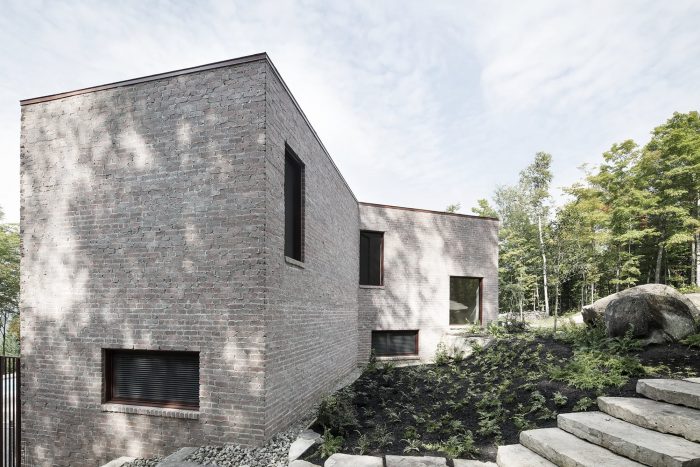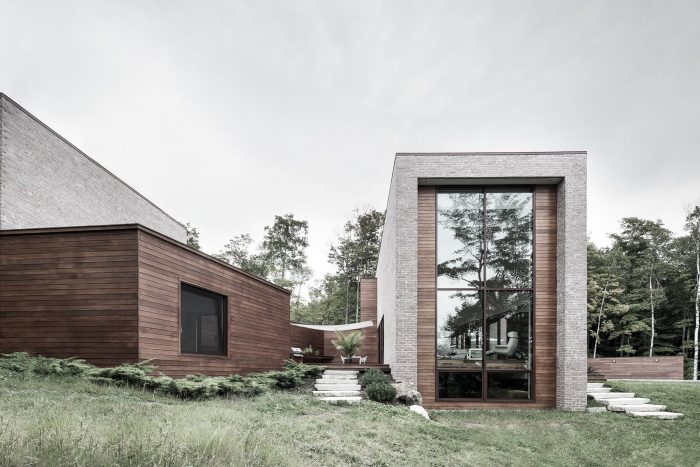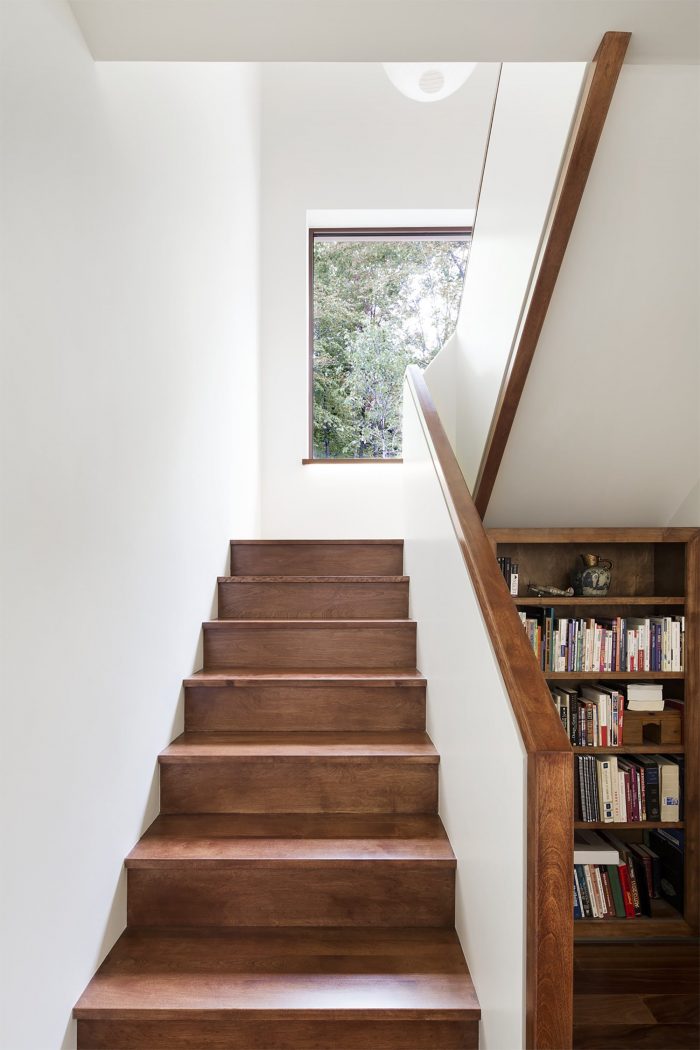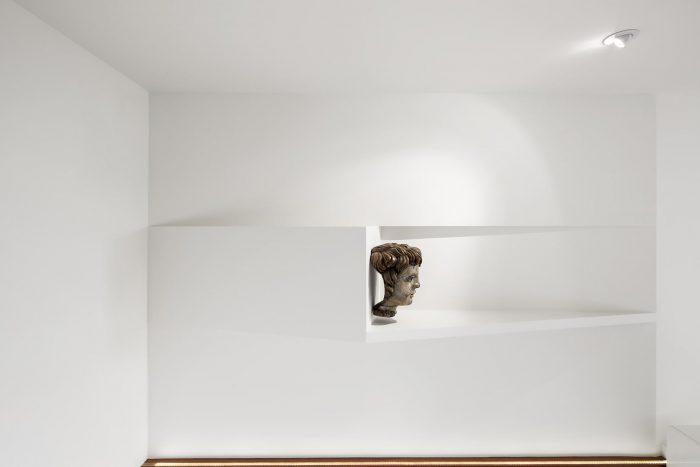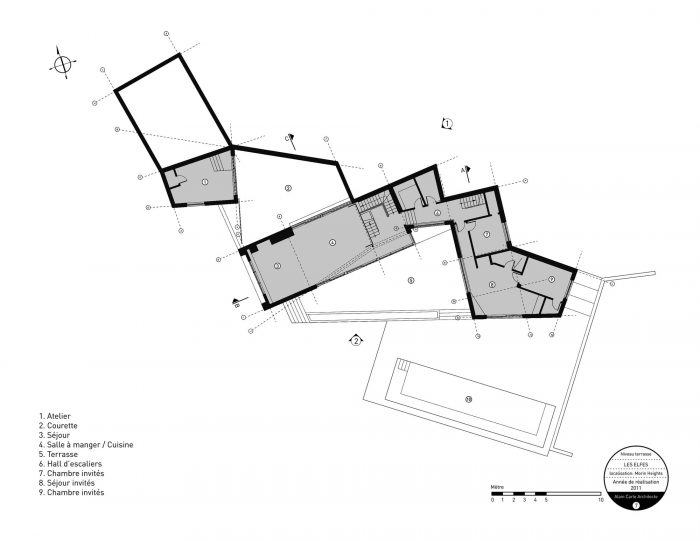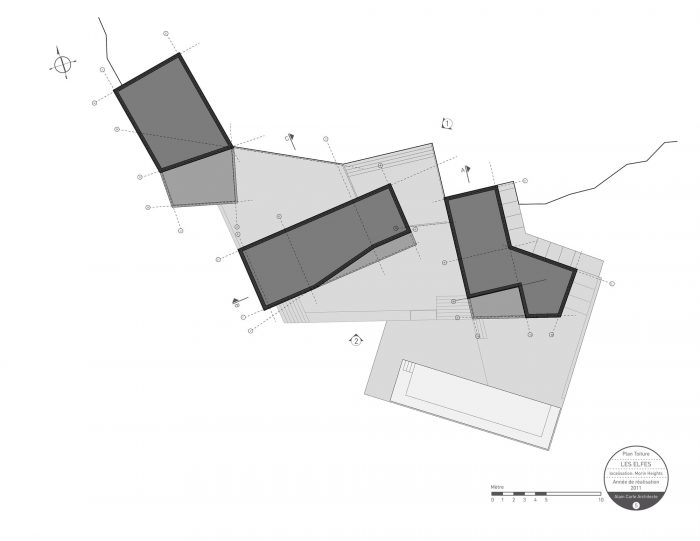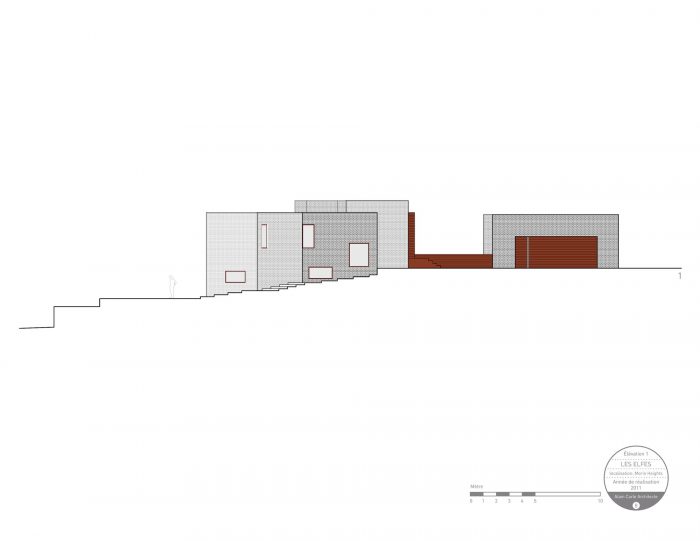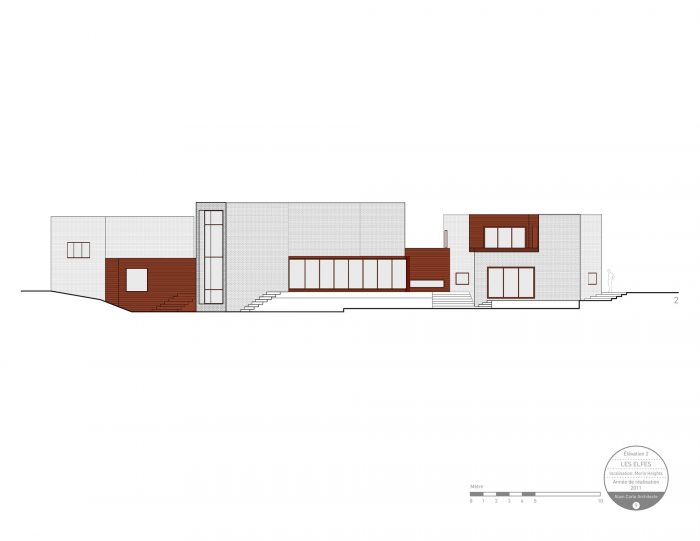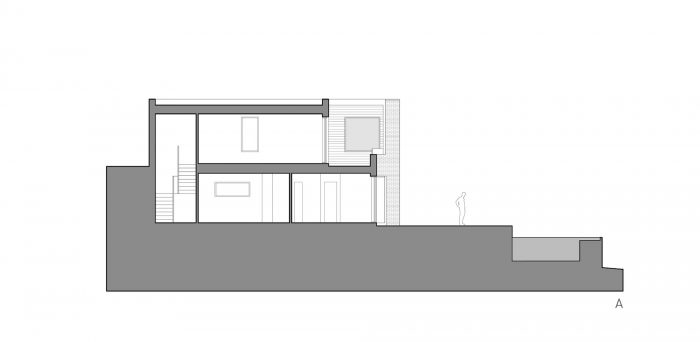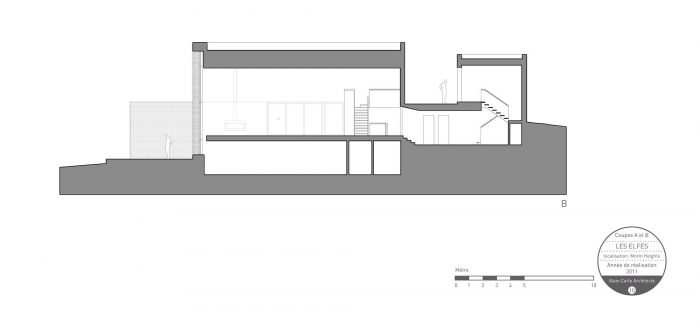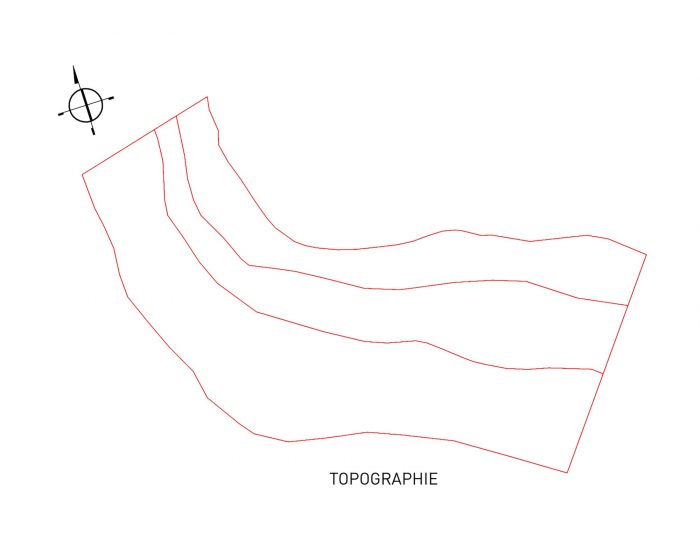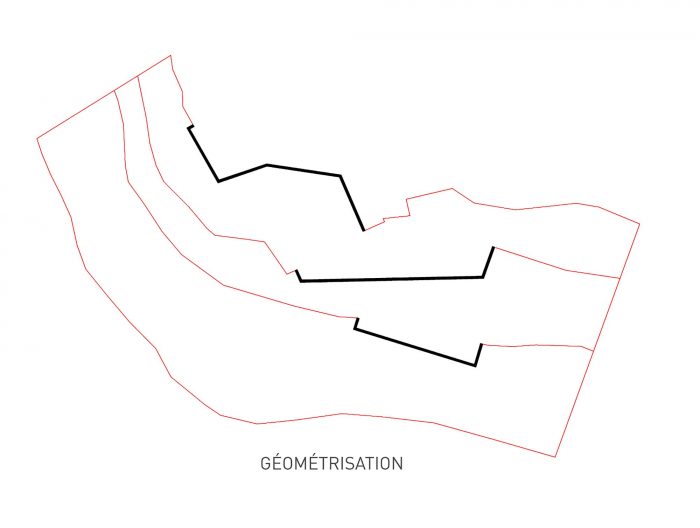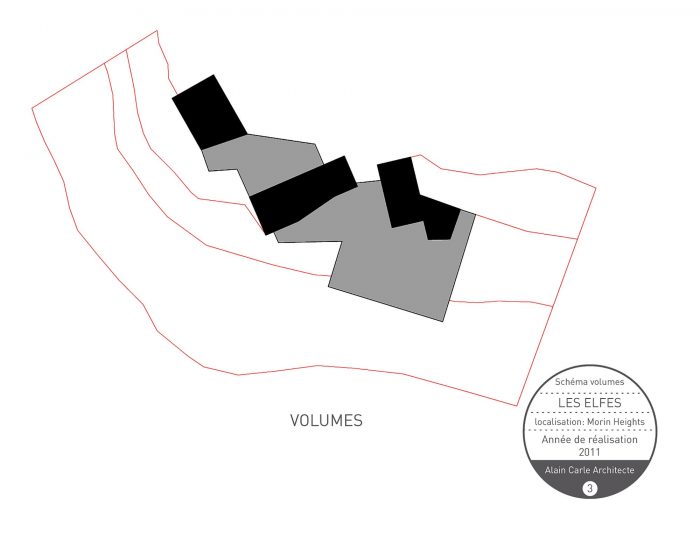位于山坡上的 “Les Elfes “住宅的地点提出了一个独特的问题,即地平线作为感知的参照物。在我看来,从几座岩石山峰上呈现给观察者的景观的纪念性与栖息地的亲密性所要求的景观质量是矛盾的。因此,有必要设计一个反纪念碑(遵循一个特别广泛的方案),并通过建筑的方式创造一种观察 “装置”。
Located on a mountainside, the site of the “Les Elfes” residence posed a singular problem of the horizon as perceptual referent. The monumentality of the landscape presented to the observer from several rocky peaks was contradictory, in my opinion, with the scenic qualities required by the intimacy of the habitat. It was therefore necessary to design an anti-monument (following a particularly extensive program) and create a sort of observation “device” by way of a building.
为了驯服这种纪念碑性并分离它所强加的 “独特 “观点,我试图通过将建筑的体积分配给几个面向特定观点的 “区块 “来分割景观。因此,这种方法并不依赖于程序上的约束,而是依赖于增强栖息地内的感知体验。倍增的视点削弱了在悬崖底部猜测的风景的雄伟性,以带出一系列由建筑形式的组装所创造的适度景观。
To tame this monumentality and separate the “unique” view it imposes, I sought to fragment the landscape by distributing the volume of the building among several “blocks” oriented to specific points of view. The approach thus does not depend on a programmatic constraint, but rather on enhancing the perceptual experience within the habitat. Multiplying the points of view attenuated the scenic majesty guessed at the base of the cliff to bring out a series of modest landscapes created by the assembly of the constructed forms.
这种碎片化也唤起了在劳伦西亚山顶上发现的岩石群的空间质量,它们创造了一种没有植被的自然 “瞭望台”。该项目通过增加有利于沉思的外部表面来保持这种质量:看而不知道。在横截面上,这些 “街区 “被半埋在地下,并通过为公用设施预留的位置连接起来。为了更好地 “框住 “内部和外部的景色,外观仍然是故意分割的。一个连续的Toog木墙,就像一条线,被部署在砖块碎片上,通过创造一个新的地平线,作为整体的感知参考。
This fragmentation also evokes the spatial quality of the rock masses found on Laurentian summits, that create a sort of natural “lookout” bared of vegetation. The project preserves this quality by multiplying the exterior surfaces conducive to contemplation: looking instead of knowing. In cross-section, the “blocks” are half-buried and connected by places reserved for utilities. The appearance remains deliberately fragmented to better “frame” the views offered from the interior and the exterior. A continuous Toog wood wall, like a thread, is deployed on the brick fragments and acts as a perceptual referent of the whole by creating a new horizon line.
通过这面墙和其中一个街区(日间房间)的移位,形成了一个更亲密的小内院,与建筑群相邻的岩壁的峰值有关。它是对俯瞰山谷的大露台的一个对立面,位于容纳日间房间的同一街区对面。这个地方在晨光中提供了一个更有限的景观视野,这创造了两位退休业主的日常空间。
A more intimate small inner courtyard is formed by this wall and by the displacement of one of the blocks (that of the day rooms) in relation to the peak of the rock face abutting the complex. It serves as a counterpoint to the great terrace overlooking the valley, located opposite the same block accommodating the day rooms. This place offers a more limited view of the landscape in the morning light, which creates the everyday space of the two retired owners.
从材料上看,砖包层将外部围护结构的建筑解读与从现场看到的石头联系起来。地板也是由Toog木材制成,再次提供了与 “线 “和土壤的象征性连续性。我们建议在砖上涂上石灰,以便更清楚地解读组件的体积方面(特别是在冬天),但业主更喜欢砖的传统精神,让其保持裸露。我们在创建L’ÉCRAN房子时重复了这种尝试。
Materially, the brick cladding links the architectural reading of the exterior envelope to the stones seen from the site. The floors also are made of Toog wood, again offering a symbolic continuity with the “thread” and the soil. We proposed to paint the brick with lime for a clearer reading of the volumetric aspect of the components (especially in winter), but the owners preferred the traditional spirit of brick left bare. We repeated this attempt with the creation of the L’ÉCRAN house.
Architects: Alain Carle Architecte
Area : 5165 ft²
Year : 2011
Photographs :Adrien Williams
City:MORIN-HEIGHTS
Country:Canada

